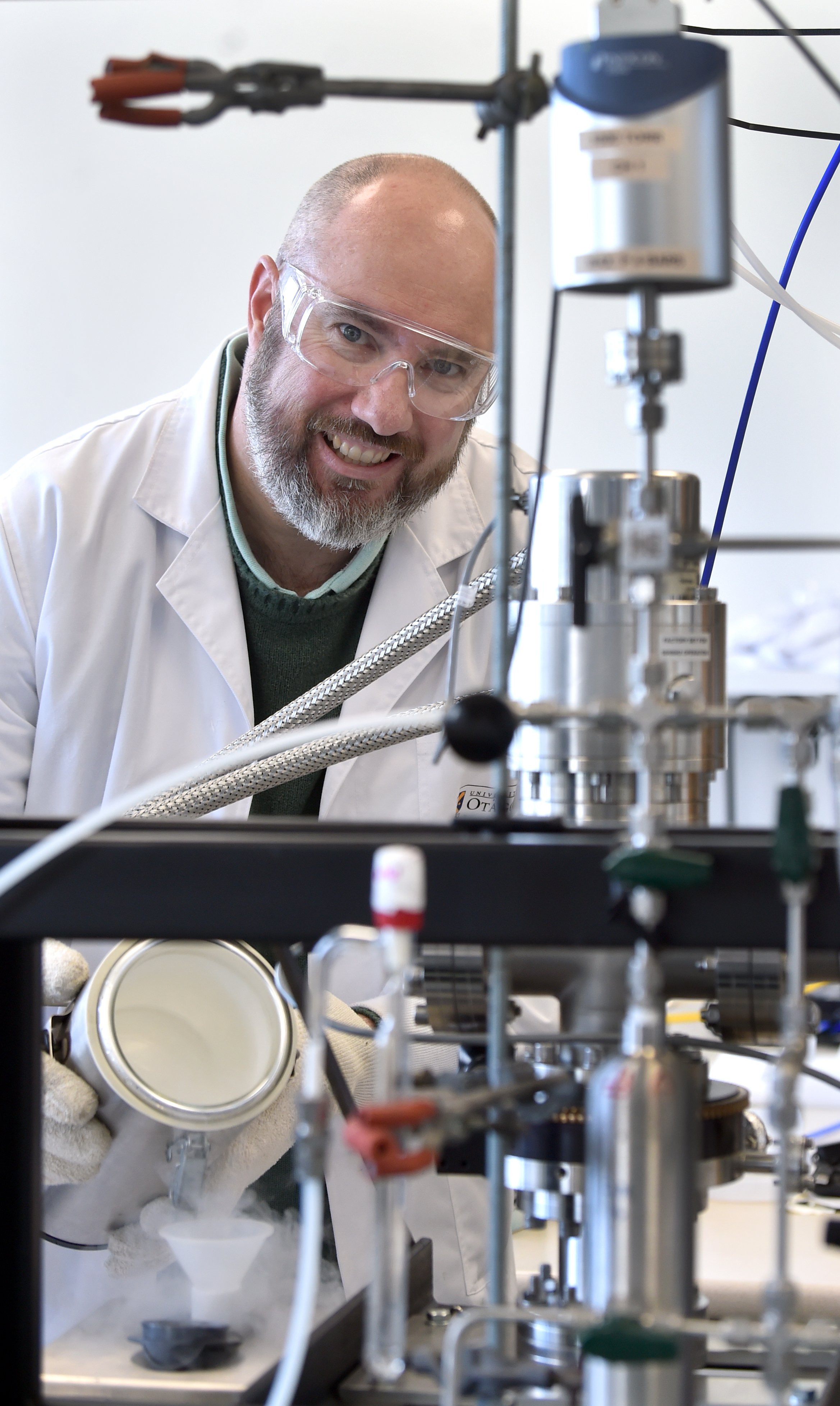
The University of Otago chemistry researcher has teamed up with Nasa’s Dragonfly mission to Titan — Saturn’s largest moon — in search of the origins of life.
In July 2028, Nasa’s Dragonfly spacecraft will be launched on a SpaceX Falcon Heavy rocket, and is expected to arrive at Titan in 2034.
Dragonfly will be the first-of-its-kind rotorcraft to explore another world, and will fly to various locations on Titan with the primary objective of locating chemical species central to astrobiology and the origins of life.
Titan's thick, nitrogen and methane-rich atmosphere — 10-times larger than Earth’s moon — is thought to have similarities to the conditions on Earth billions of years ago, before oxygen became abundant.
By observing the ongoing chemical processes on Titan, researchers can test hypotheses about the chemical steps that led to life on Earth, as well as gain insights into climate change.
To that end, Dr Ennis and his team will investigate clathrates — icy minerals that incorporate significant quantities of methane in deep sea deposits.
Dr Ennis has received a $941,000 Marsden Grant from Te Aparangi Royal Society to produce methane clathrate hydrate under variable pressure, to determine changes in its crystal structure.
Once the nature of the clathrates was mapped, specialised set-ups at Dr Ennis’ laboratory and at Nasa, will identify the strength of binding between methane and its clathrate host, determining under what conditions the methane is released.
"Upon exposure to space radiation, we believe amino acids could be formed, which are biopolymer building blocks essential for life.
"An ensuing detection of methylamine and its chemical analogues intermixed with clathrate material, will provide new diagnostic signatures required for Dragonfly’s exploration.
"Our studies will include an investigation if clathrates have played a role in the chemical evolution of our Solar System."
He said it was very exciting and something he had worked on since he did his PhD in 2005.
"My career's pretty much followed the Cassini-Huygens mission, which was a Nasa mission to Saturn and Titan, and now, excitingly, they've got a follow-up mission.
The rotorcraft was about the size of a Volkswagen Beetle.
"We're able to fly it from point to point and do chemical analysis on the surface.
"We're more re-creating the environment of Saturn's moon Titan in our lab. We're looking to re-create the icy surface of Titan and then perform radiation experiments to see if essentially the ingredients for life could have been evolved on Titan over that period of time."
He said it would be a wonderful opportunity for some of the university’s PhD candidates to get to go to the United States and work in advanced laboratories.
Dr Ennis comes from Perth and has been at Otago for eight years.
Dr Ennis’ grant was one of 20 awarded to Otago researchers, worth more than $14.4 million.












